Kara
Forum Replies Created
Viewing 10 posts - 1 through 10 (of 10 total)
-
KaraParticipantThank you for your response I would say closer to a crow. Here’s another picture I caught of the hawk the other day, the expression makes me laugh...
 in reply to: Sharp-Shinned Hawk? #749511
in reply to: Sharp-Shinned Hawk? #749511 -
KaraParticipantThere has been many males at the feeder, but this is the first female I have since we put up the feeders 3 weeks ago. Thank you for your reply.in reply to: New to the feeder #699762
-
KaraParticipantActivity 3 Male American Goldfinch- Throughout both summer and winter, the Goldfinch maintains its golden colour but its vibrancy changes with seasonality. In the summer, the Goldfinch is vibrant yellow throughout its body, with a distinct black patch on its crown and black and white wings. In contrast, the winter Goldfinch is a dull yellow, with black and white wings and notably absent is the black patch on its crown. Common Loons- The difference between a Common Loon in the summer as compared to the winter is quite striking. In the summer they have a black and white checkered back, an iridescent black head with red eyes. The loon's neck is distinct with a black and white striped ring, followed by another ring of iridescent black. In the winter, all the regal colouring of the summer is muted to a grey and the red eyes are black.in reply to: Activities: Different Seasons, Different Birds #697341
-
KaraParticipantActivity 2 In my area my year-round residents are; The Northern Cardinal, The Canada Goose, and the Black-capped Chickadee. In the city I see Canada Geese and Cardinals daily, but If I want to see a Chickadee I need to go to the Bruce Trail or a Conservation area. My occasional residents are; the Baltimore Oriole, The American Redstart, and the Eastern Kingbird. Of those, I have only seen the Baltimore Oriole a few years back when my neighbour had a cherry tree in the backyard.in reply to: Activities: Different Seasons, Different Birds #697024
-
KaraParticipantActivity 1 Northern Cardinal vs. Blackburnian Warbler The Cardinal tends to stay in North America whereas the Blackburnian Warblers spend their winters in South American and migrate North in mid spring, heading back south in the fall. Scarlet Tanager vs.Western Tanager The Scarlet Tanager winters in South America. In the Spring it makes its way across the Eastern half of the United States and up to Eastern Canada for the summer months until it again migrates South for the winter. The Western Tanager winters in Mexico and Central America. In the spring they migrate to the Western half of the United States and Western Canada. Ruby-throated Hummingbird vs. Rufous Hummingbird The Ruby-throated Hummingbird winters in Mexico and Central America, with isolated pockets in Florida. In the Spring they migrate across the Gulf and up to the Eastern half of the United States, up into Canada where they are found in the Eastern, Prairie, and Western Provinces. The Rufous Hummingbird Winters in Mexico and Central America. In the spring it migrates North following the West Coast of the United States up into Canada. On its migration South it covers a wider geographical area.in reply to: Activities: Different Seasons, Different Birds #697020
-
KaraParticipantActivity #4 My Favourite Bird The Ruby-throated Hummingbird. The Ruby-throated Hummingbird, has a slender, slightly downcurved bill with small wings. They're bright emerald green on their back and crown with a white belly. The males have the ruby throat. They live in open woodland, forest edges, grasslands, parks and, hopefully, my backyard this summer. I have only seen females in my garden, but I'm optimistic that I will see the male this year. Southern Ontario has had an unseasonably cool and windy April, but warmer temperatures are coming our way and I have my feeders out in anticipation.in reply to: Activities: Bird ID Practice #696980
-
KaraParticipantActivity 2- Three birds with the same colour, birds that are orange and black Bullock's Oriole- Bright orange, black back, large white wing patch. Orange face with a black line through the eye and a black throat Blackburnian Warbler- vivid orange on face and throat, triangular facial pattern of black Black-headed Grosbeak- rich orange cinnamon colour, with a black head and black and white wingsin reply to: Activities: Bird ID Practice #696974
-
KaraParticipantActivity 1- Bird ID by Shape American Robin- large, round body, long legs and a fairly long tail
 Goldfinch- sparrow sized or smaller, small head, long wings, short notched tail, small conical beak
Goldfinch- sparrow sized or smaller, small head, long wings, short notched tail, small conical beak
 in reply to: Activities: Bird ID Practice #696961
in reply to: Activities: Bird ID Practice #696961 -
KaraParticipantActivity #3 My favourite backyard bird is the Baltimore Oriole. I usually don't hear them or see them in my backyard until late May. I love their song and their colouring. I have set up nectar feeders in the front and back of my house to attract them.in reply to: Activities: Exploring Birds #695901
-
KaraParticipantActivity #2
 From the Songbird grouping I found a Male Red Winged Blackbird in my backyard cleaning up the seed from the bird feeder
From the Songbird grouping I found a Male Red Winged Blackbird in my backyard cleaning up the seed from the bird feeder
 From the Pigeon and Dove grouping I found a Mourning Dove looking less than impressed at having a picture taken at 6:50 am on a Tuesday
From the Pigeon and Dove grouping I found a Mourning Dove looking less than impressed at having a picture taken at 6:50 am on a Tuesday
 From Waterfowl, my husband sent me a photo of a Long Tailed Duck on Lake Ontario in reply to: Activities: Exploring Birds #695898
From Waterfowl, my husband sent me a photo of a Long Tailed Duck on Lake Ontario in reply to: Activities: Exploring Birds #695898
Viewing 10 posts - 1 through 10 (of 10 total)
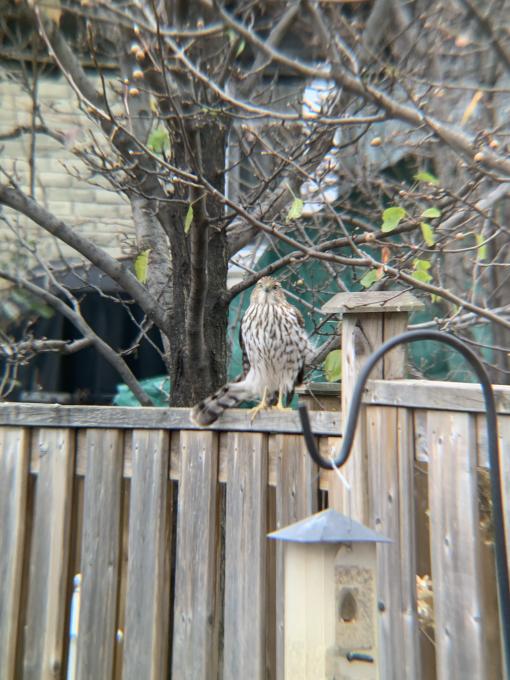
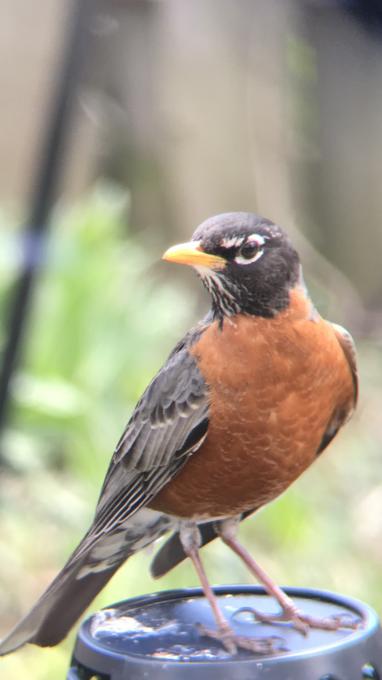 Goldfinch- sparrow sized or smaller, small head, long wings, short notched tail, small conical beak
Goldfinch- sparrow sized or smaller, small head, long wings, short notched tail, small conical beak
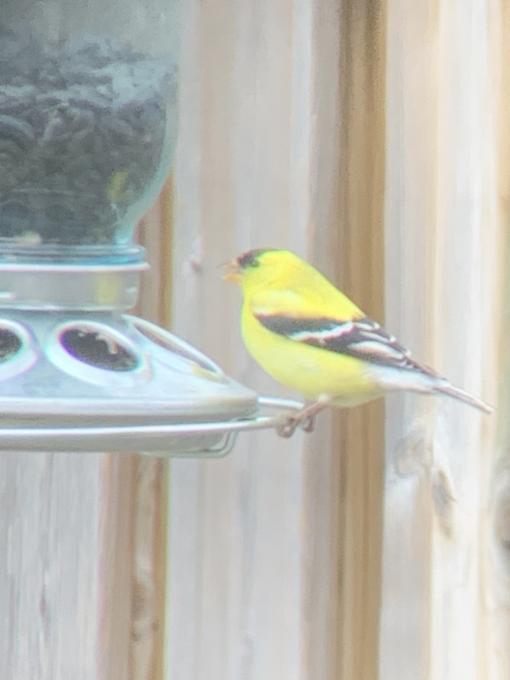
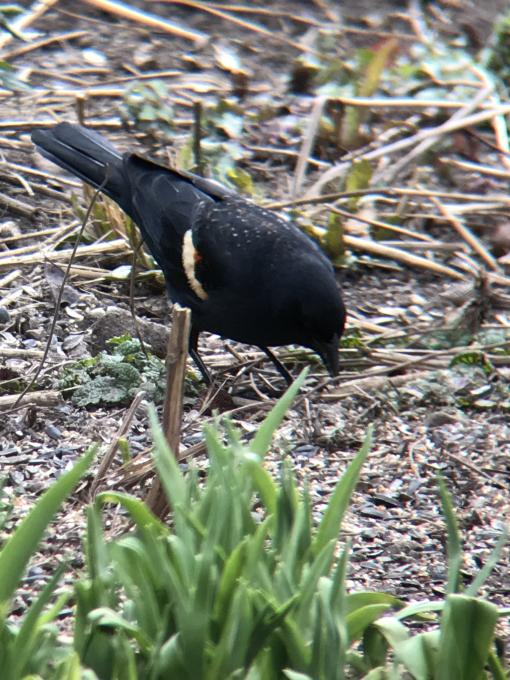 From the Songbird grouping I found a Male Red Winged Blackbird in my backyard cleaning up the seed from the bird feeder
From the Songbird grouping I found a Male Red Winged Blackbird in my backyard cleaning up the seed from the bird feeder
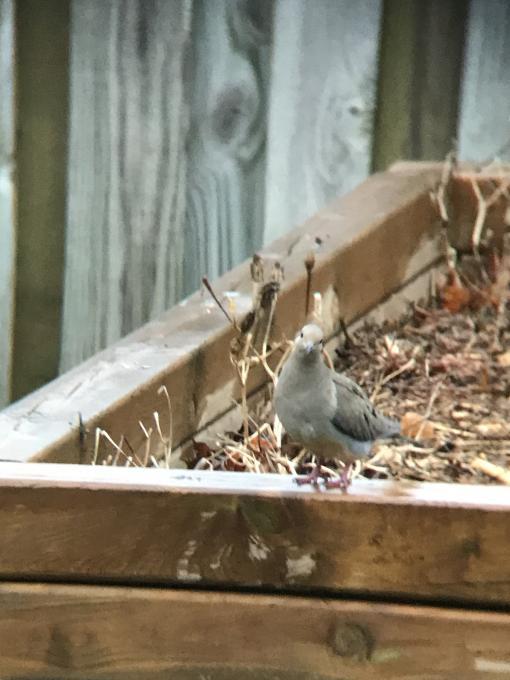 From the Pigeon and Dove grouping I found a Mourning Dove looking less than impressed at having a picture taken at 6:50 am on a Tuesday
From the Pigeon and Dove grouping I found a Mourning Dove looking less than impressed at having a picture taken at 6:50 am on a Tuesday
 From Waterfowl, my husband sent me a photo of a Long Tailed Duck on Lake Ontario
From Waterfowl, my husband sent me a photo of a Long Tailed Duck on Lake Ontario